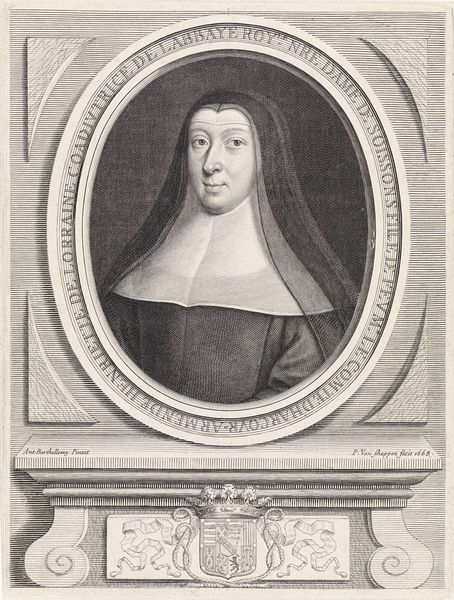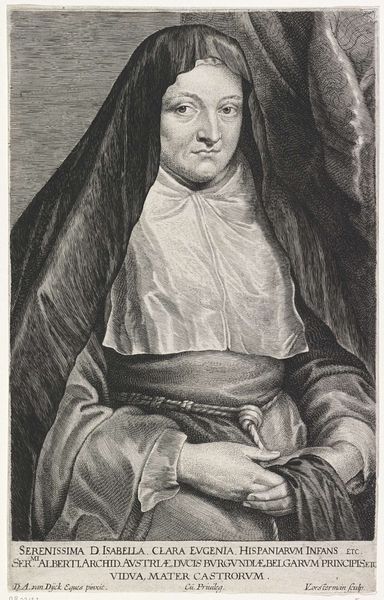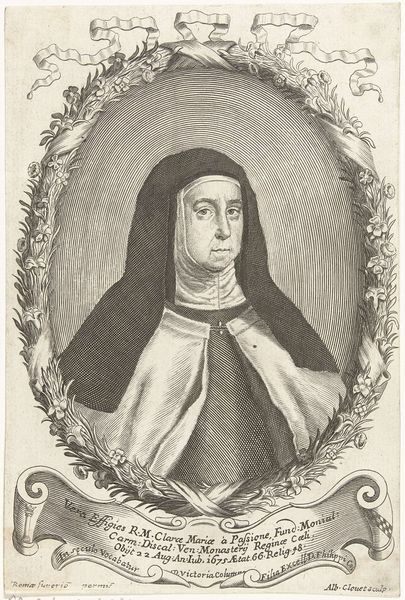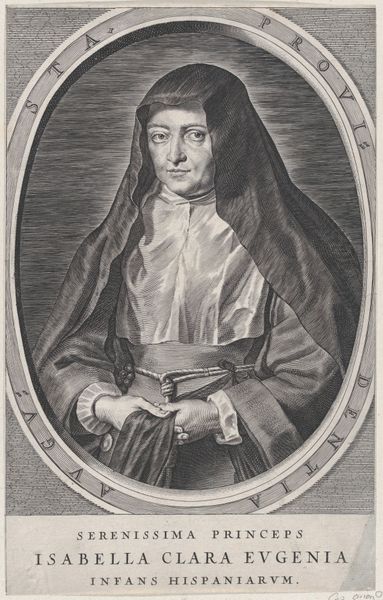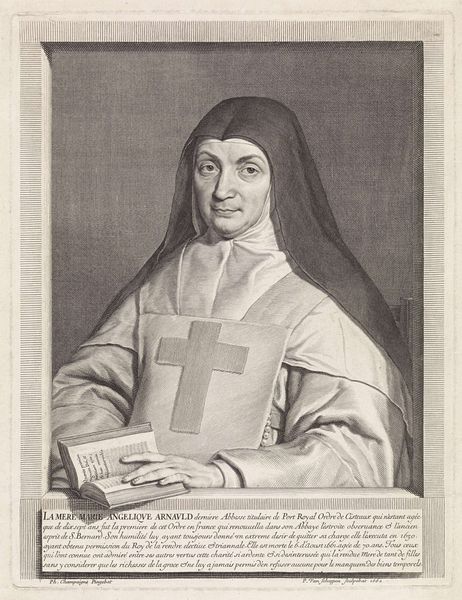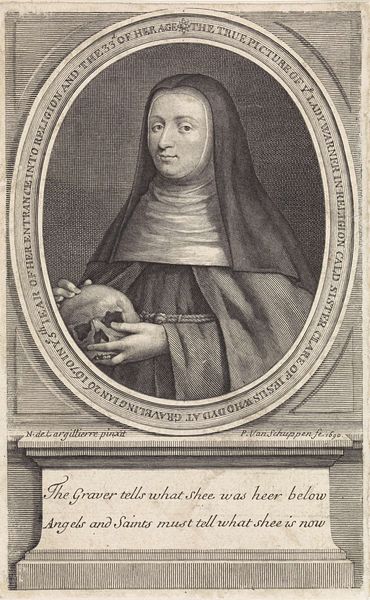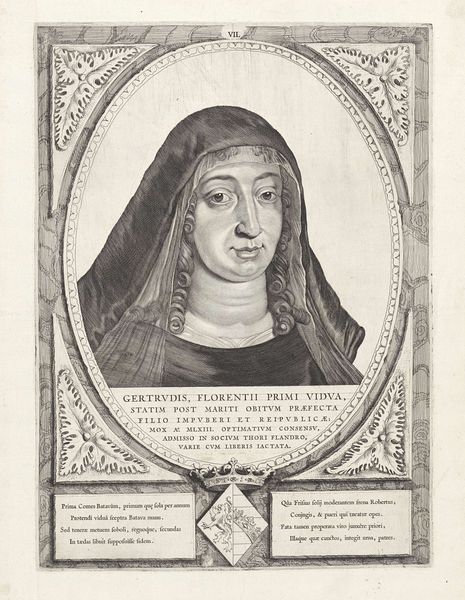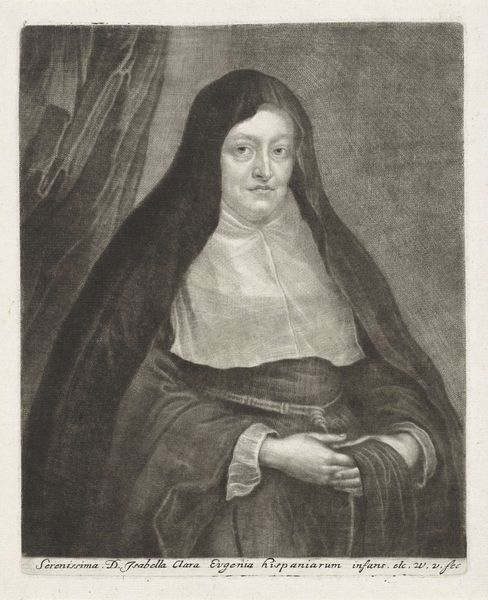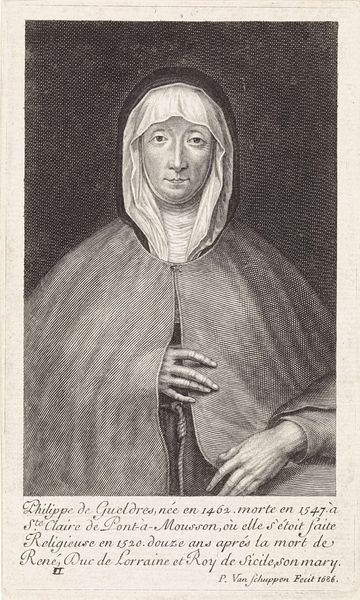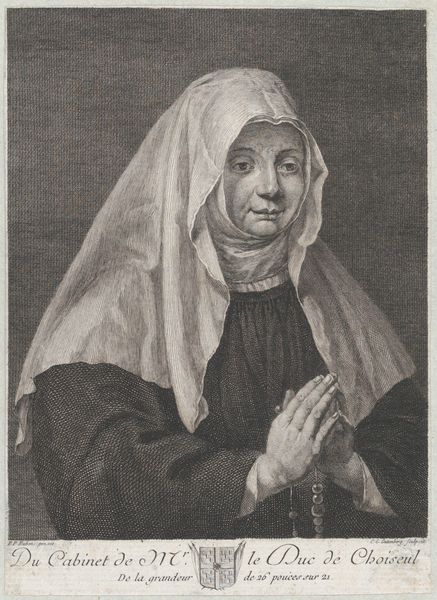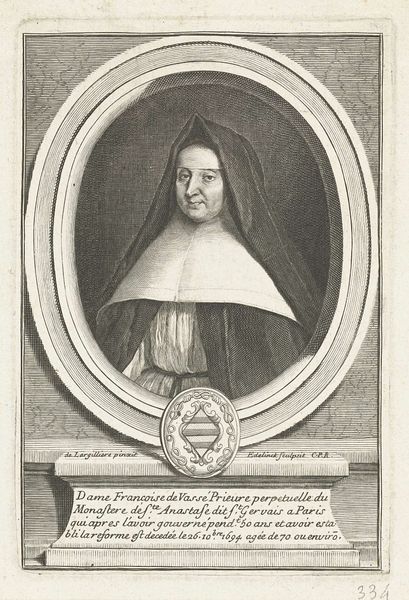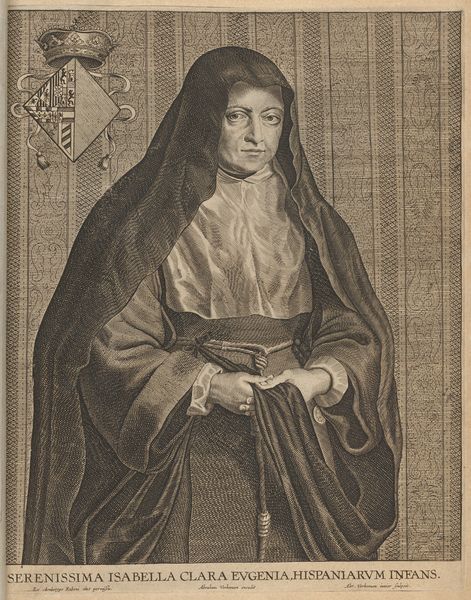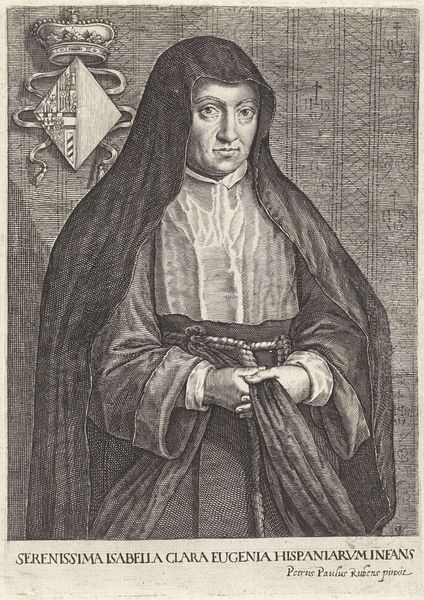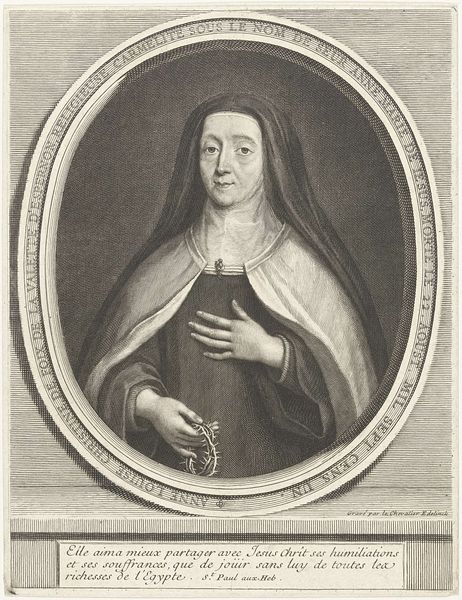
Portret van Marie-Félice Orsini, hertogin van Montmorency 1666 - 1702
0:00
0:00
engraving
#
portrait
#
baroque
#
old engraving style
#
portrait drawing
#
history-painting
#
engraving
Dimensions: height 152 mm, width 105 mm
Copyright: Rijks Museum: Open Domain
Editor: Here we have a piece titled "Portret van Marie-Félice Orsini, hertogin van Montmorency" which translates to Portrait of Marie-Félice Orsini, Duchess of Montmorency, created some time between 1666 and 1702 by Pieter van Schuppen. It’s an engraving and it's interesting; there is an almost austere feel, contrasting with what I understand of Baroque art. What do you see when you look at this image? Curator: It’s compelling isn’t it? This portrait isn't just an image of a woman; it's a carefully constructed representation of power and religious devotion in 17th-century Europe. How might Marie-Félice's identity as both a Duchess and a nun challenge conventional notions of female agency during this period? The context is key. Here we see someone with worldly power making a conscious decision to devote her life to a religious order. Editor: That's a good point, how would you reconcile those opposing social positions at that time? Curator: Exactly. Consider the engraving itself. The lines, the textures...they contribute to the overall message. Look at how the engraver uses light and shadow to create depth and texture, the cross she's holding seems intentionally put there to convey her devotion. Does this challenge or reinforce existing power structures, in your opinion? Editor: I suppose in her specific historical context it could have given her more power than a woman usually wielded? Choosing to live a religious life, founding an order, must have afforded her autonomy. Curator: Precisely. This image is far more complex than just being an individual’s portrait. We're actually seeing visual politics being articulated through the portrait. It forces us to ask: what narratives were women allowed to control? Editor: I didn’t consider that, I’ve learnt today that even simple art pieces can express historical context in sophisticated ways! Curator: Agreed! By looking closely and asking the right questions, art opens doors to different times.
Comments
No comments
Be the first to comment and join the conversation on the ultimate creative platform.
